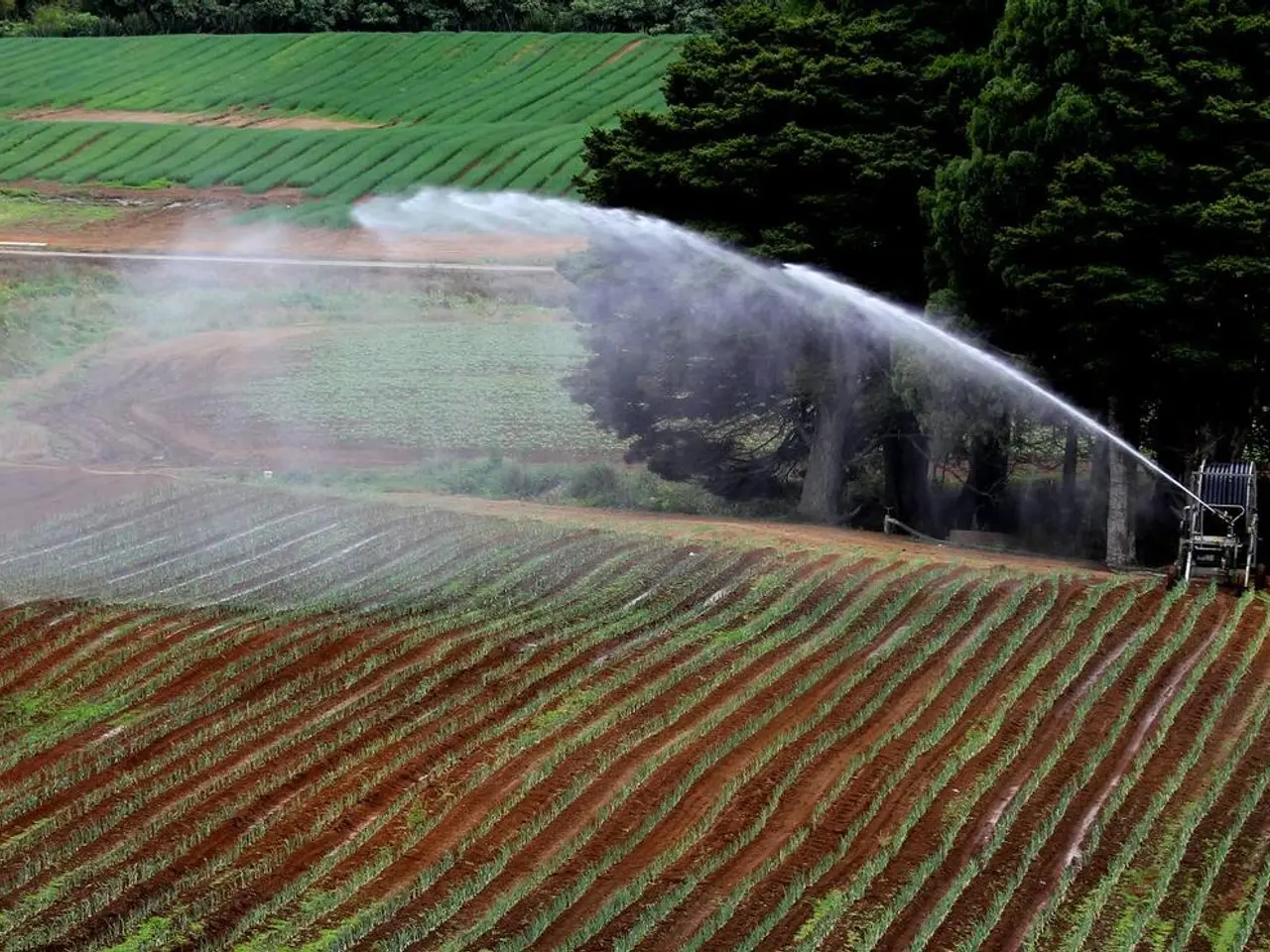Innovations in Soil Clean-up through Solar Techniques
Solar-Powered Soil Remediation: A Promising Future for Environmental Cleanup
The future of soil remediation is being shaped by breakthrough technologies that are revolutionizing environmental cleanup. In the United States, solar-powered soil remediation projects are at the forefront of this transformation. These initiatives often integrate solar energy with environmental cleanup technologies, guided by the EPA's "Green Remediation" program.
These projects typically involve site assessments that combine solar feasibility studies with environmental assessments to optimize placement and system efficiency. Geographic Information System (GIS) mapping tools are used to maximize remediation impact while reducing costs.
One of the key advancements in this sector is the development of modular solar remediation systems. These systems can be phased in parallel with cleanup progress and often reuse existing site infrastructure like monitoring wells and electrical conduits to reduce complexity and expense. Emerging research also applies artificial intelligence and machine learning to optimize soil pollution identification and remediation systems dynamically, enhancing solar soil remediation effectiveness.
Financial incentives, such as the federal Solar Investment Tax Credit (ITC), make solar remediation more attractive. Collaboration and partnerships between technology providers, remediation experts, and government bodies are fostering knowledge sharing, innovation, and adoption of advanced solar remediation technologies.
Integrated solar remediation complexes combine multiple treatment technologies under solar power systems. Fiber optic sensing technology can measure soil moisture, temperature, and contamination levels with unprecedented precision. Technical limitations in solar remediation systems are managed through battery storage integration and hybrid power configurations.
The integration of renewable energy with environmental cleanup aligns with global sustainability goals and corporate social responsibility initiatives. Emerging economies, particularly in Asia Pacific and Latin America, offer growth opportunities due to rapid industrialization, urbanization, and implementation of stricter environmental regulations.
Large-scale solar installations can provide megawatts of renewable energy to support comprehensive remediation efforts. The global contaminated soil remediation technology market is predicted to reach $107.6 billion by 2030, exhibiting an annual growth rate of 6.5%.
One notable example of this innovation is 8MSolar's mission to use solar technology to transform lives and communities by freeing them from dependence on traditional energy sources. Equipment maintenance requirements are minimized through component selection and remote monitoring capabilities.
Regulatory approval processes are facilitated by EPA guidance documents that address renewable energy integration in remediation projects. Solar-powered remediation delivers a triple environmental benefit: cleaning contaminated soil, reducing carbon emissions, and promoting renewable energy adoption.
Integration with existing infrastructure leverages established electrical systems and monitoring networks to reduce installation costs. AI systems can process non-numerical data like images, videos, and environmental sensor readings to optimize solar remediation system performance in real-time. Weather dependency in solar remediation systems is managed through battery storage integration and hybrid power configurations.
Seasonal performance variations are addressed through oversized solar arrays and predictive energy management systems. Data center and technology companies are driving renewable energy demand growth, with solar and wind capacity contracted to US data centers reaching nearly 34 GW through 2024.
Arcadis has developed a patented sustainable in-situ thermal treatment method called Thermal In Situ Sustainable Remediation (TISR®) that uses renewable energy sources including solar energy and waste heat to purify soil and groundwater. Solar-powered remediation delivers a carbon footprint reduction and a return on investment within 3-7 years, depending on system size and local electricity rates.
In summary, solar-powered soil remediation in the U.S. is an active and evolving field incorporating advanced technology integration, regulatory support under the "Green Remediation" framework, and modular design principles to improve environmental outcomes. The latest federal policy changes may impose new review constraints on related projects located on federal lands.
- Solar energy is being utilized in soil remediation projects, particularly in the United States, as part of a transformation in environmental cleanup.
- Solar-powered soil remediation projects combine solar power with environmental cleanup technologies, guided by the EPA's "Green Remediation" program.
- Projects involve site assessments that use GIS mapping tools to optimize placement and system efficiency.
- Modular solar remediation systems are being developed, allowing for phase-wise integration with cleanup progress and reusing existing site infrastructure.
- Artificial intelligence and machine learning are being applied to optimize soil pollution identification and remediation systems dynamically.
- Financial incentives like the federal Solar Investment Tax Credit (ITC) are making solar remediation more attractive.
- Collaboration between technology providers, remediation experts, and government bodies is fostering innovation and adoption of advanced solar remediation technologies.
- Integrated solar remediation complexes combine multiple treatment technologies under solar power systems.
- Fiber optic sensing technology measures soil moisture, temperature, and contamination levels with precision.
- Technical limitations in solar remediation systems are managed through battery storage integration and hybrid power configurations.
- The integration of renewable energy with environmental cleanup aligns with global sustainability goals and corporate social responsibility initiatives.
- Arcadis has developed a patented sustainable in-situ thermal treatment method called Thermal In Situ Sustainable Remediation (TISR®) that uses renewable energy sources like solar energy.
- Solar-powered remediation delivers a carbon footprint reduction and a return on investment within 3-7 years, depending on system size and local electricity rates.




